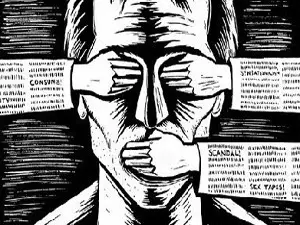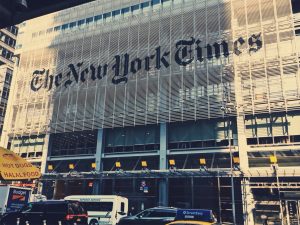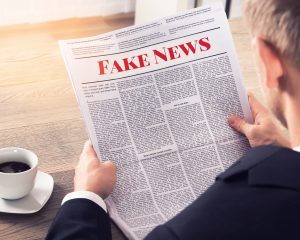Communication theorists Fred Siebert, Theodore Peterson, and Wilbur Schramm created the basis for the classification of how we view media systems.
Their book Four Theories of the Press, published in 1956 by the University of Illinois, is the quintessential resource referred to while writing about mass communication theories.
In the book, the authors outlined the forms of the press that they thought could take around the world. These normative theories are also known as western theories of mass media. Normative theories are different from other communication theories because they are not based on scientific explanations and predictions.
The four theories of the press according to Siebert, Peterson and Schramm are:
Authoritarian Theory

Developed in 17th century England, authoritarian theory is the oldest of the four theories. It describes of a media system which acts as a propaganda tool for a monarch, dictator or the government. Freedom of information is limited and the chief role of the press is to educate the public of government policies and prevent threats by using censorship.
Soviet Communist Theory
The Soviet Union expanded on the authoritarian theory and imposed even more restrictions on the press. The theory, known as Soviet communist theory, describes of a system in which the state owns or controls all forms of mass media. The function of press is to bring about societal change by influencing communist values and denouncing democratic regimes.
Libertarian Theory

Libertarian theory describes of a contrasting press, which is free to report on the government. Freedom of information is guaranteed with no restrictions or censorship. Hence, the press serves as a watchdog and keeps the ruling party in check. The theory sees the public as rational beings who can decide for themselves what is good and what is bad.
Social Responsibility Theory

Under libertarian theory, the press belongs to the public and in a capitalist society, this presents a major drawback. Advertisers and corporations can influence the press as much as a government in authoritarian system. Social responsibility theory assumes that the press should adhere to codes of conduct and should not feel pressured by big businesses and investors. The press has a social responsibility to serve the public without any outside interference.
Beyond the four theories
Four Theories of the Press is based on the thesis that “the press always takes on the form and coloration of the social and political structures within which it operates. Especially, it reflects the system of social control whereby the relations of individuals and institutions are adjusted.”
However, the changing society can no longer fit into the generalization of these four categories. As pointed out by John Nerone in Last Rights: Revisiting the Four Theories of the Press (1995), “Four Theories does not offer four theories: it offers one theory with four examples.”
Researchers have since then proposed many typologies with an intention to revise the classic four theories. John Merrill and Ralph Lowenstein expanded on the original theories with more differentiated philosophies namely authoritarian with negative government controls, social-centralist with positive government controls, libertarian without any government controls, and social-libertarian with minimal government controls.
William Hachten’s revision retains the authoritarian and communist concepts, and introduces an all inclusive “western” concept while adding revolutionary and developmental concepts. In the mid 1980s, Robert Picard added the democratic socialist theory after observing the state intervention in Western Europe to “ensure and not to endanger the survival of a free media.”
Revisions like these clearly point out the limitations of the four theories. Nevertheless, Four Theories of the Press remains an important read for communication students and educators.
